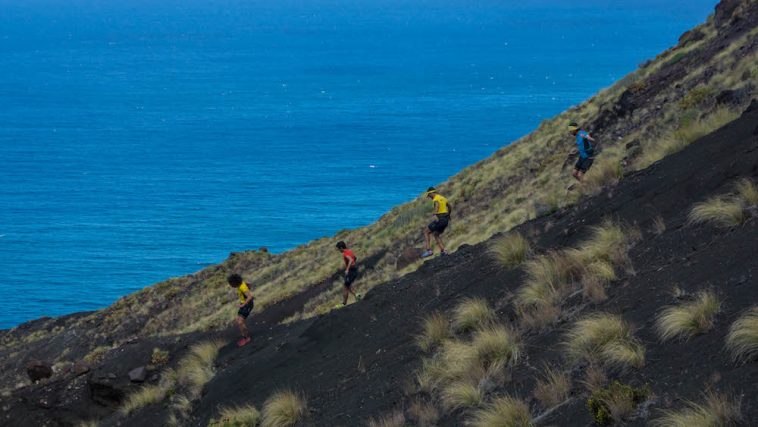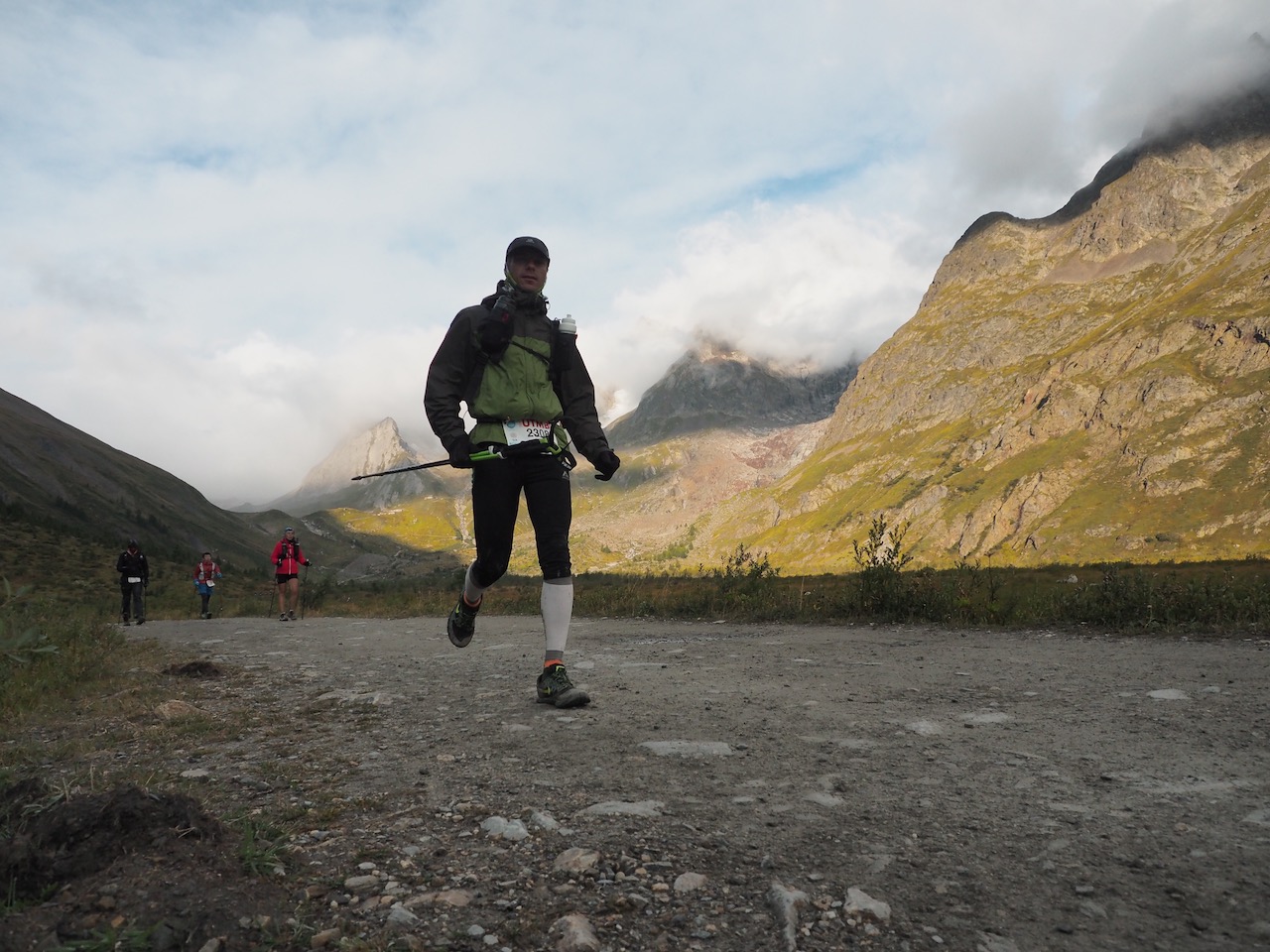One of the peculiarities of most trail races is the great importance of the vertical gain and drop. The name given to this sport should sometimes be questioned, since in trail « running » it is often more efficient to walk, at least on the climbs. Here are a few things to think about when training climbs and descents.
Notions of biomechanics
On a flat surface or on a gentle slope, both when walking and running, the center of gravity oscillates vertically. When walking, we observe a pendulum movement while when running it is more of a rebound movement.
By going up a slope of more than 20%, this vertical oscillation is completely lost. The center of gravity then follows a linear upward trajectory. Concretely this involves the loss of elastic energy return which is very useful on the flat.
This is one of the reasons why some runners, who are very quick on the flat, are less efficient when the profile of a competition is more rugged.
On a steep climb, almost all of the energy cost is associated with moving the center of gravity (external work) since the internal work (the energy cost to move the limbs around the center of gravity) becomes negligible due to the decrease in speed.
Runners with thinner calves tend to have an advantage on flat courses because of the low energy expenditure required to move their limbs. Uphill runs allow some stronger athletes to do well since it is all about relative aerobic power. It is not surprising to see ski mountaineers and cyclists compete favorably with runners on foot efforts where all you do is climb.
A matter of perspective
To climb fast, you have to be in good shape.
Those who live in the plains will have every interest in cycling to prepare for the elevation gain. Indeed, from a physiological point of view, cycling is more specific to walking uphill than running.For those fortunate enough to have access to mountains it becomes interesting to measure progress vertically, in meters of vertical gain per hour. All good watches will give you this indication.
When climbing it can be disheartening to see a speed of only 15 minutes per kilometre. However seeing 1200 meters per hour is motivating and it is reassuring.
Changing the way of thinking about interval training
The notion of vertical speed also opens up new possibilities in terms of interval training.
Rather than dividing intervals into time or distance, divide the effort and recovery fractions into vertical meters.
For example, repeat 50m intervals of high intensity elevation gain with 20m of recovery elevation gain.It is then possible to convert the pace uphill to an equivalent pace on the flat. The easiest is to use Strava or TrainingPeaks, two applications that give a « Grade Adjusted Pace » or a « Normalized Pace » respectively. Some watches even allow a look that is adjusted in real time.
Don’t forget the negative elevation
Very great importance is often given to preparing for any given elevation gain whereas it is rather the negative drop that will often overcome a poorly prepared runner.
There are different ways to prepare for a negative drop. The best method is really up to each individual, and depends mainly on the environment in which training happens.
A study has shown that maximum effort in a descent of 1200m of vertical drop can cause as much peripheral fatigue as an ultra marathon in the mountains. So it is not absolutely necessary to do a lot of volume downhill to be ready to face the downhills at a competition.
That being said, a workout that includes full speed descents is not necessarily suitable for everyone and you will have to be careful in the progression.
If you don’t have access to serious inclines for your workouts, it is possible to do quite well with a mix of strength training and specific exercises.
However, strengthening has its limits, especially when it comes to adapting the ankle and foot muscles. To prepare the legs for the heavy impacts of downhills, performing sprints on flat terrain may be beneficial. (Unlike everything mentioned above, this last point is not supported by the scientific literature. This is only an idea of the author, which he himself has successfully tested.)
Endurance sports coach David Jeker holds a master’s degree in sports science. He is an ambassador for Julbo Canada and represents Canadian runners at ITRA. Follow him on Instagram and on Strava.
Must Read:
- Gravel Cycling as Cross Training for the Trail Runner
- Do We Really Need to Stretch?
- Five Treadmill Workouts That Mimic Trail Running & Training


